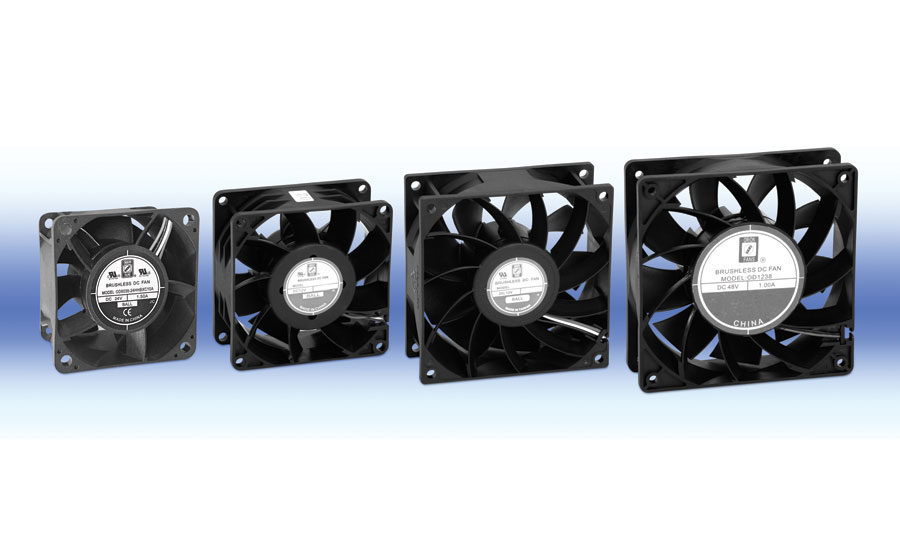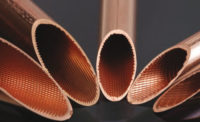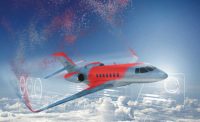Static pressure is the amount of impact or resistance against airflow by various system components on the airflow path within a given system. Total Pressure (PT), the amount of pressure exerted by the airflow directly on anything in the airstream, is used to find the required cubic feet per minute (CFM) for a system (Velocity Pressure).
This can be described as: PT = PS + PV where PS is the static pressure.
Fan selection can be based on a CFM and static pressure where the static pressure is measured in inches of column water (ex: 141 CFM @ 3.9” H2O).
Negative static pressure in systems is caused by physical objects like electronic components, densely packed pc boards and filters, etc. An ideal system operates with the static pressure in equilibrium, as the positive static pressure created by the fans equals the negative static pressure created by resistance from the air navigating obstacles in the airflow path. If the static pressure resistance is greater than the available static pressure of the fan, the airflow (CFM) delivered by the fan decreases until the system pressure matches. A matching of the system occurs when the airflow delivered by the fan at a given static pressure equals the static pressure resistance of the components in the path at the CFM delivered by the fan.
Fans create positive static pressure to move air through a given system, while obstacles create negative static pressure causing resistance to air moving through the system. While high-static pressure fans are normally found in military, aircraft, HVAC, and radiator applications because of their larger size and high power, the drive for miniaturization in electronics has resulted in smaller electronics cabinets, enclosures, boxes and systems. Although these applications now offer expanded features and functionality, they have reduced the amount of size and space for the system components. This has created an increasing demand for cooling fans that efficiently move more air through the system to maintain adequate operating temperatures and support product operating performance and integrity in the field. Fan manufacturers have been able to incorporate this high-power and high-air movement into much smaller packages for cooling commercial applications from CPUs, server enclosures (particularly server power supplies), raid servers, routers, optical network units, telecom power supplies, telecom rectifiers, voice gateways, wide area networks, and WiMax transmitters, to set top boxes, refrigeration units, convection ovens and air purifiers.
For example, high-end air purifiers offer continuous air purification in all parts of your home or office. The pressure sealed filter chambers ensure no particles or gases escape the filters, achieving up to a 99.97% HEPA efficiency. These sealed filter chambers create a high static environment, as air does not easily pass through the filter.
In addition, convection ovens can utilize a high-pressure duct distribution system to produce airflow within a cooking chamber of the convection oven. Most convection ovens have rugged fans to ensure consistent circulation of heat around the food. The high-pressure airflow is easily tuned to produce a precise airflow pattern within the cooking chamber by opening and/or closing individual nozzles, which extend from a duct distribution system into the cooling chamber.
Fan Benefits
Designed specifically for highly restrictive environments, a high static pressure DC fan can deliver superior airflows up to 283 CFM, with a low weight-to-output ratio, and maximum static pressure value up to 3.90 inches of water (H2O) column. Ordinarily, most 120mm fans on the market offer maximum airflows of 105 CFM with a maximum static pressure of 0.24 inches of water. However, today’s 80mm high static pressure fans can outperform a standard 120mm fan, by offering airflows up to 141 CFM with maximum static pressure values of 3.90” H2O, not only providing higher airflow, but also significant space savings.
High static pressure fans typically feature specially designed/curved blades that not only deliver high CFM values, but also focus air movement to push/pull air through obstacles for efficient cooling. Additional design considerations include the number of blades per fan, various operating speeds, and size of the motor. In order to reduce energy consumption of equipment running for long periods of time, adding intelligent controls to the fan in order to meet energy saving demands is becoming more popular and practical. High static pressure fans with special function options including PWM, tachometer, alarm and thermal controls can feature up to 30% energy savings; up to 50% at lower RPM speeds. These types of solutions help meet application energy requirements when systems are operating 24/7.
Blower Benefits
For larger applications, motorized impellers and blowers offer a space-saving design, simplified installation and mounting, and maintenance-free operation. Blowers and motorized impellers produce a high volume of air that can be concentrated or directed more effectively to deliver better commercial and industrial ducted air movement. These blowers and motorized impellers combine high efficiency with small size to significantly lower the intrinsic heat in the system. The low-profile design of the blower provides excellent airflow over the motor itself, ensuring low internal operating temperatures and substantial energy savings.
High static pressure AC motorized impellers usually feature backward curved blades to provide high airflows up to 1900 CFM and maximum static pressure of 5.4” H20. AC blowers feature an all-metal impeller, sealed dual ball bearing design, and rugged die cast aluminum frame.
In addition to moving a significant amount of air for its size, these motorized impellers combine high airflow with high reliability—up to 60,000 hours in high static pressure environments—to offer a low-maintenance, cost-effective cooling solution.
DC blowers typically offer airflows up to 136 CFM with maximum static pressure of 2.5” H20. High static pressure DC blowers are also available with PWM, tachometer, alarm and thermal controls to reduce energy consumption.
Noise
High static pressure fans and blowers tend be louder versus standard cooling solutions, and must be taken into account during the enclosure or package design phase. A 120mm high static pressure fan with airflow of 283 CFM can have a noise level of 70 dB as compared to a standard 120mm fan with airflow of 105 CFM at 43 dB. The noise depends on the motor power, capacity, static pressure and discharged volume and is caused by a number of factors including air speed, load, vortex shedding, turbulence, and vibration. Unwanted noise can be minimized by reducing the system impedance, minimizing airflow disturbances (clear pathways for air), optimizing fan size and speed for the application (no overkill), delivering consistent temperature, and improving installation location to minimize vibration (isolation).
Conclusion
When selecting the optimum cooling solution, it is vital to know the static pressure of the system. As a rule, airflow decreases as the static pressure increases. The performance of a fan or blower can be defined as the amount of airflow, CFM, at a given static pressure. Vane axial fans, super high performance fans, blowers and motorized impellers can help the design engineer overcome today’s static pressure challenges in smaller system applications.



